
Are you feeling nostalgic for the bold colors and whimsical patterns of the past? If so, the Retro Interior Design Style might be just what you need to bring that vintage charm into your home. This fun and eclectic style takes inspiration from the past but adds a modern twist, creating spaces that are both stylish and functional. In this article, we’ll take a trip down memory lane, exploring the history of the Retro Interior Design Style, its key elements, and how you can incorporate it into your own living space. So, let’s jump into our time machine and dive into the world of retro design!

Table of Contents
Where does it come from?
The term “retro” is often used to describe designs and styles that harken back to the 1950s, 60s, and 70s. This period was marked by rapid social and cultural changes, and the design world was no exception. The post-war boom saw an explosion of new materials and technologies, which designers eagerly embraced, creating bold and innovative designs that defied convention.
The Retro Interior Design Style was influenced by various design movements of the time, such as Mid-Century Modern, Pop Art, and Scandinavian design. The result was an eclectic mix of colors, patterns, and materials that reflected the optimism and creativity of the era.
@axxla.com can you handle a little retro interior design style? #retro #retrodecor #homedecor #homedesign #design #furniture #inspo #home #decoration #homesweethome #interiordesign #interiors #interior #retrointerior ♬ Play That Funky Music – Wild Cherry
Main characteristics of Retro Interior Design Style
The Retro Interior Design Style is characterized by its bold use of color, playful patterns, and an eclectic mix of materials and furnishings. Some of its key elements include:
Bold colors
Retro design is known for its vibrant and contrasting colors, often featuring hues like orange, yellow, green, and turquoise. These colors can be used on walls, furniture, or accent pieces to create a striking visual impact.
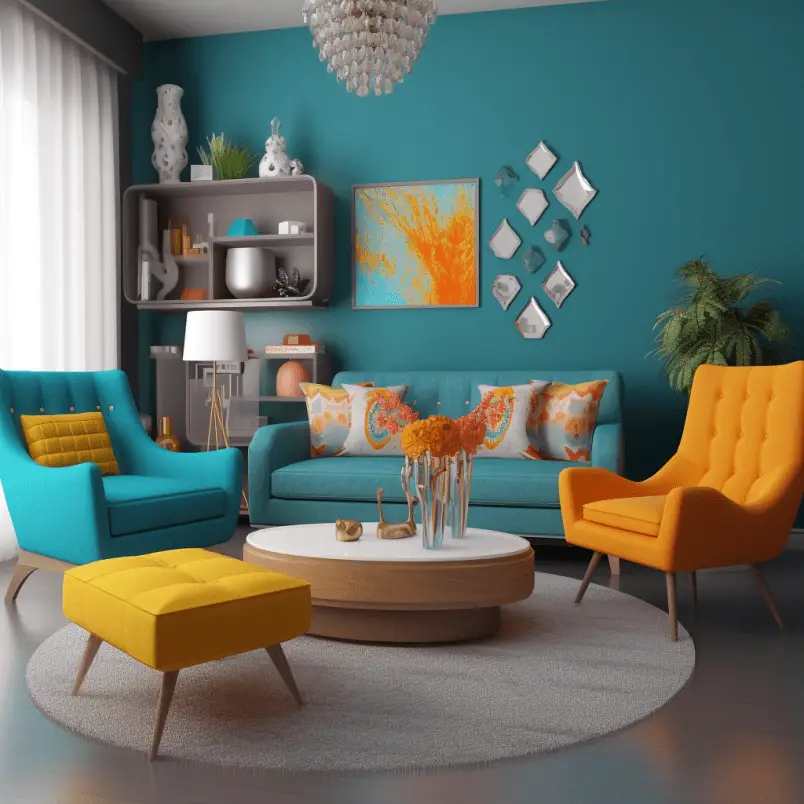
Playful patterns
Geometric shapes, bold stripes, and psychedelic patterns are hallmarks of retro design. Incorporate these patterns through wallpaper, upholstery, or artwork to add a touch of whimsy to your space.
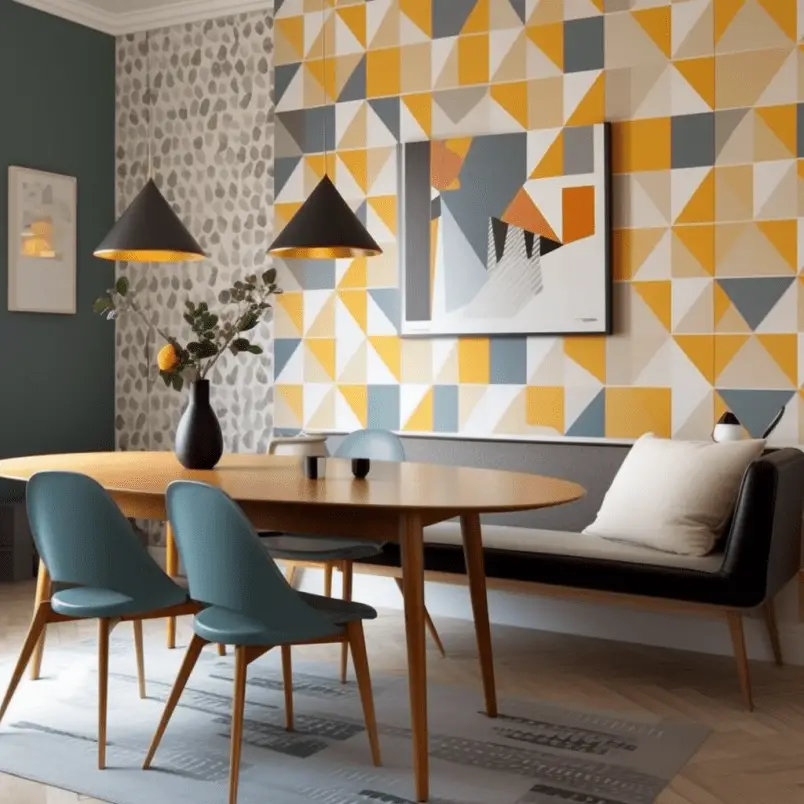
Eclectic furnishings
The retro style embraces a mix of materials, textures, and shapes. Look for furniture with clean lines, tapered legs, and organic shapes that embody the Mid-Century Modern aesthetic.

Vintage accessories
To truly capture the retro vibe, incorporate vintage accessories like lava lamps, sunburst clocks, and shag rugs. These items add character and authenticity to your retro-inspired space.
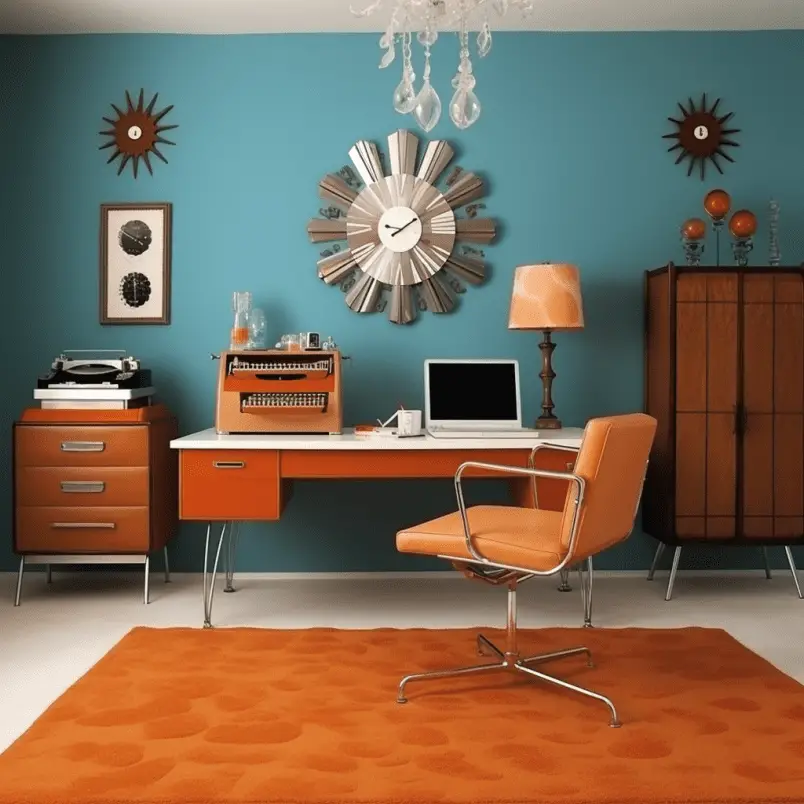
Achieve the Retro look in your home
If you’re looking to infuse your home with the charm of the Retro Interior Design Style, here are some tips to get you started:
- Start with color: Choose a bold color palette that reflects the vibrancy of the retro era. You can paint an accent wall or opt for colorful furniture pieces to make a statement.
- Mix and match patterns: Don’t be afraid to mix different patterns and textures, as this adds depth and visual interest to your space. Just be sure to balance your patterns with solid colors to avoid overwhelming the room.
- Choose retro-inspired furniture: Look for furniture pieces with clean lines, tapered legs, and organic shapes that evoke the Mid-Century Modern style. Mixing these pieces with more contemporary items will create an eclectic and inviting space.
- Accessorize thoughtfully: Add vintage accessories and artwork that represent the retro era, such as sunburst mirrors, patterned ceramics, or pop art prints. These items will help to tie your retro-inspired space together.
- Embrace the unexpected: Retro design is all about having fun and breaking design rules. Feel free to experiment with unique color combinations, unconventional furniture layouts, or one-of-a-kind décor items.
Retro Interior Design adaptions in different rooms
Retro design can be easily adapted to suit different rooms in your home:
Living room
Opt for a bold, colorful sofa or accent chairs, and pair them with a mix of patterned and solid-colored pillows. Incorporate retro-inspired lighting fixtures, like floor lamps or sputnik chandeliers, to create a warm and inviting atmosphere.
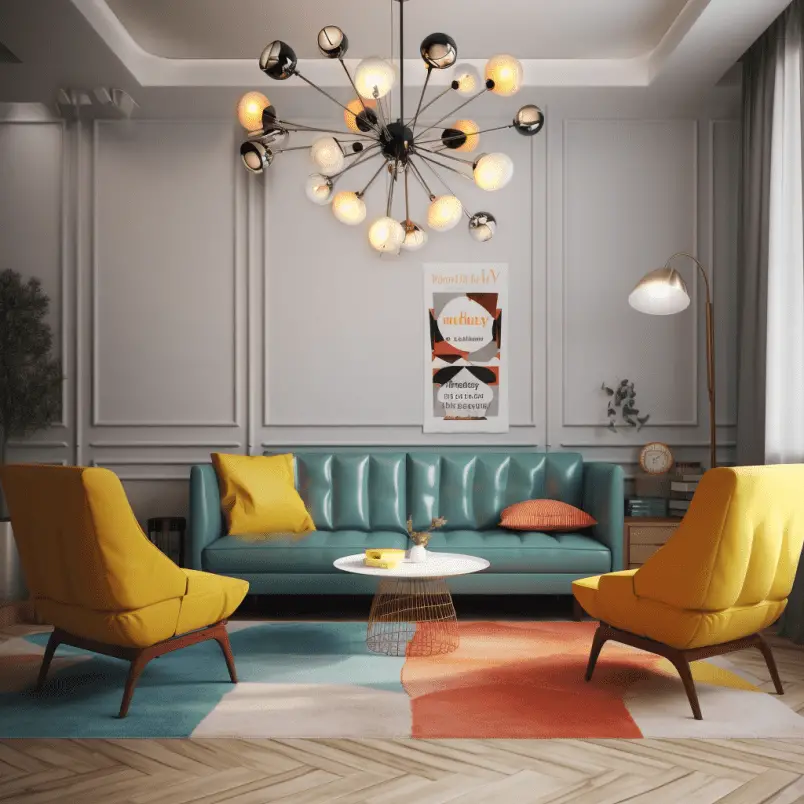
Dining room
Choose a sleek dining table with tapered legs, and pair it with brightly colored upholstered chairs. Add a geometric-patterned rug or curtains to bring the room together.
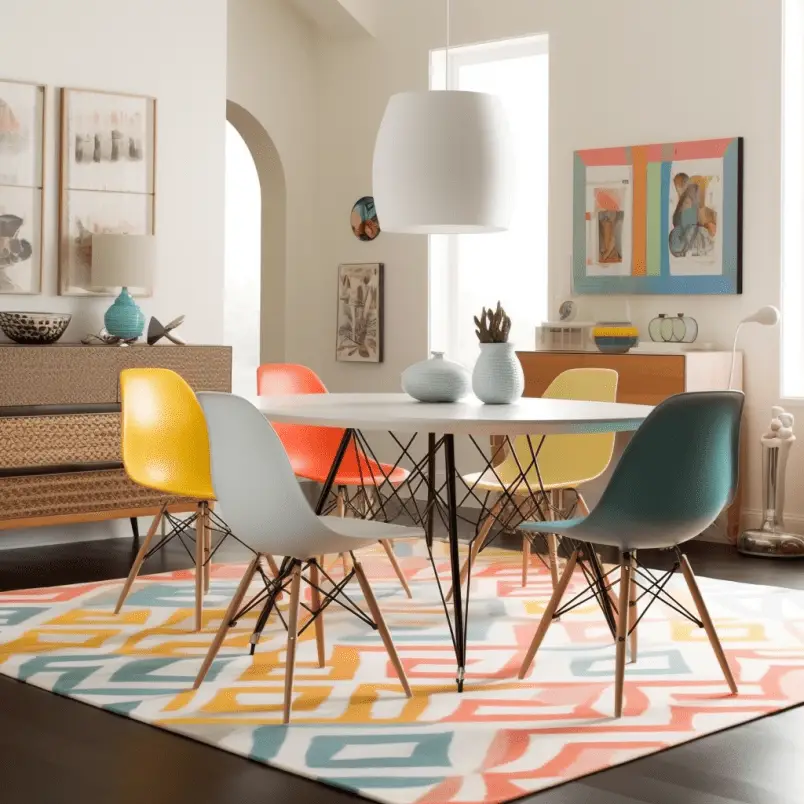
Bedroom
Create a cozy and nostalgic retreat with a vintage-inspired bed frame, colorful bedding, and playful patterned curtains. Consider incorporating a statement wallpaper or wall mural for added visual interest.

Kitchen
Update your kitchen with retro-inspired appliances and colorful cabinetry. Add pops of color through patterned backsplashes, vintage-inspired dinnerware, and quirky wall art.
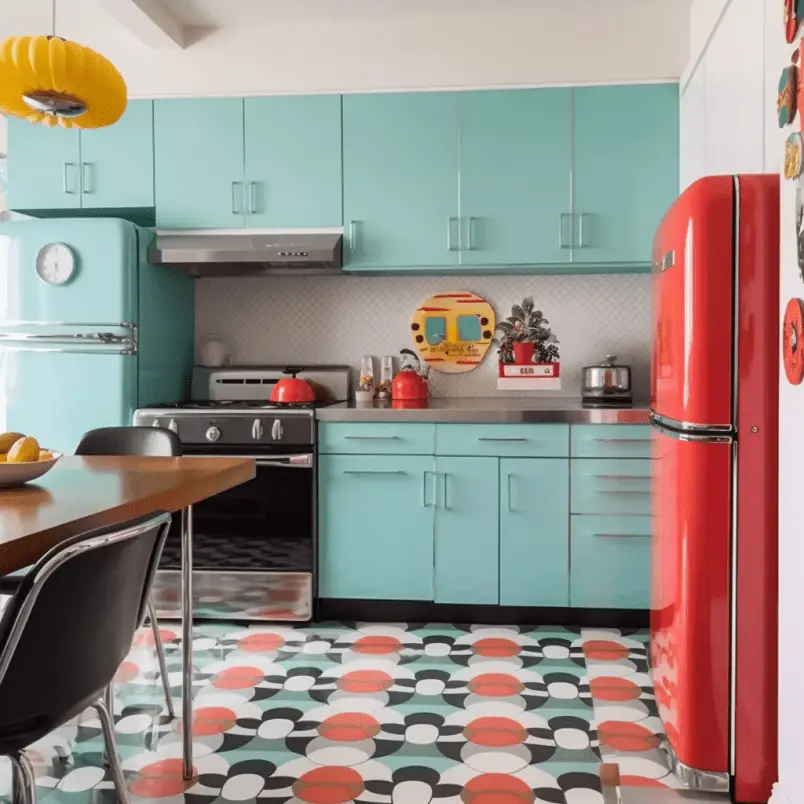
Pros and cons of Retro Interior Design
Like any design style, the Retro Interior Design Style has its advantages and disadvantages:
Pros:
- Unique and playful: The Retro Interior Design Style adds a sense of fun and individuality to any space, making it stand out from more conventional designs.
- Versatile: The eclectic nature of retro design allows for easy mixing and matching with other styles, creating a personalized and unique look.
- Timeless appeal: The retro aesthetic has maintained its popularity over the years, making it a design choice that won’t quickly go out of style.
Cons:
- Can feel overwhelming: The bold colors, patterns, and eclectic furnishings of retro design may feel too busy for some people, particularly in smaller spaces.
- Difficult to execute: Successfully blending different patterns, textures, and materials in a cohesive manner can be challenging.
- Limited availability: Finding authentic vintage pieces or retro-inspired furnishings can sometimes be difficult, potentially limiting your design options.
Conclusion
The Retro Interior Design Style is a vibrant and playful choice for those who appreciate the bold aesthetics and eclectic charm of the past. By incorporating key elements like bold colors, whimsical patterns, and a mix of furnishings and accessories, you can create a space that feels both nostalgic and fresh. While the retro style may not be for everyone, it offers a unique and engaging alternative for those seeking something different from conventional interior design trends. With thoughtful planning and a creative approach, the retro style can be adapted to suit various rooms in your home, creating a cohesive and captivating living space.
FAQ
What is the origin of the Retro Interior Design Style?
The Retro Interior Design Style is inspired by the design trends of the 1950s, 60s, and 70s, drawing from movements like Mid-Century Modern, Pop Art, and Scandinavian design.
What are some key elements of the Retro Interior Design Style?
Key elements include bold colors, playful patterns, eclectic furnishings, and vintage accessories.
How can I incorporate Retro Interior Design into my home?
To incorporate Retro Interior Design, start with a bold color palette, mix and match patterns, choose retro-inspired furniture, accessorize thoughtfully, and embrace the unexpected.
Is Retro Interior Design suitable for all types of rooms?
Yes, with careful planning and thoughtful application, Retro Interior Design can be adapted to suit various rooms, including living rooms, dining rooms, bedrooms, and kitchens.
What are some pros and cons of the Retro Interior Design Style?
Pros include its unique and playful aesthetic, versatility, and timeless appeal. Cons can be its potential for feeling overwhelming in smaller spaces, the difficulty of execution, and limited availability of authentic vintage pieces or retro-inspired furnishings.


